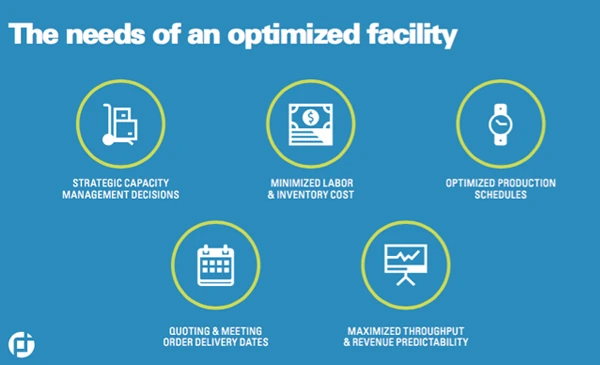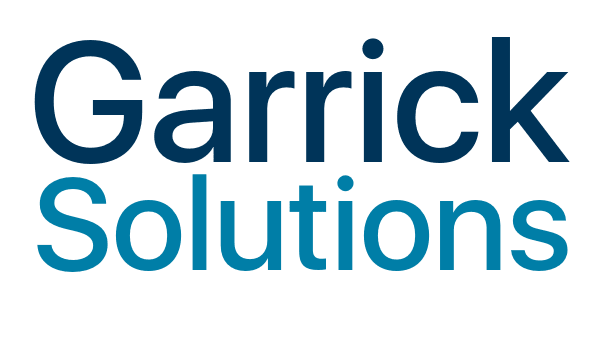
In today’s fast-paced business world, maintaining efficient inventory control and procurement processes is crucial for success. That’s why many companies are turning to the integration of Enterprise Resource Planning (ERP) and Supply Chain Management (SCM) systems to streamline their operations. By combining these powerful tools, businesses can experience a wide range of benefits, from improved inventory accuracy to enhanced visibility across the supply chain.
Imagine a world where you can effortlessly manage your inventory and procurement processes, all in one centralized system. Well, with the integration of ERP and SCM systems, that dream becomes a reality. By bringing together these two powerful technologies, businesses can optimize their inventory control and procurement functions, leading to reduced costs, improved efficiency, and increased customer satisfaction.
With an integrated ERP and SCM system, companies can enjoy real-time visibility into their inventory levels, allowing for better demand forecasting and planning. This, in turn, enables businesses to optimize their inventory levels, ensuring that they always have the right products in stock to meet customer demands without incurring unnecessary carrying costs. Additionally, the integration of these systems allows for seamless communication between different departments, eliminating bottlenecks and reducing the risk of errors.
Furthermore, combining ERP and SCM systems provides businesses with a holistic view of their supply chain, from procurement to production to distribution. This enhanced visibility allows for better coordination and collaboration with suppliers, leading to improved supplier relationships and more efficient procurement processes. By automating and streamlining these processes, businesses can reduce lead times and minimize the risk of stockouts or overstock situations, ultimately saving time and money.

In conclusion, the integration of Enterprise Resource Planning (ERP) and Supply Chain Management (SCM) systems offers numerous benefits for businesses seeking to streamline their inventory control and procurement processes. From improved visibility and demand forecasting to enhanced coordination with suppliers, the integration of these systems can revolutionize the way companies manage their supply chains. So, if you’re looking to optimize your inventory control and procurement functions, it’s time to consider integrating ERP and SCM systems for a more streamlined and efficient operation.
Integrating Enterprise Resource Planning (ERP) and Supply Chain Management Systems can bring numerous benefits to businesses, particularly in terms of streamlined inventory control and procurement. By combining these two systems, companies can enhance visibility and accuracy in tracking inventory levels, optimize order fulfillment, and improve overall supply chain efficiency. The integration allows for real-time data sharing, enabling better forecasting and demand planning, reducing stockouts, and minimizing excess inventory. Furthermore, it enables seamless communication between different departments and suppliers, leading to better collaboration and increased productivity. Overall, the integration of ERP and Supply Chain Management Systems can significantly improve inventory control and procurement processes, ultimately driving business growth and success.

The Benefits of Integrating Enterprise Resource Planning (ERP)
Enterprise Resource Planning (ERP) and Supply Chain Management (SCM) are two vital components of a successful business. Both systems work together to optimize operations and enhance overall efficiency. When integrated, ERP and SCM provide businesses with a seamless solution for inventory control and procurement. By streamlining these processes, organizations can reduce costs, improve customer satisfaction, and achieve better supply chain visibility.
Improved Inventory Control
One of the key benefits of integrating ERP and SCM systems is improved inventory control. With an integrated solution, businesses can gain real-time visibility into their inventory levels and locations. This allows for better demand forecasting and planning, ensuring that the right products are available at the right time. By optimizing inventory levels, organizations can reduce carrying costs and minimize the risk of stockouts or overstocking.
In addition, integrated ERP and SCM systems enable businesses to implement efficient inventory management practices such as just-in-time (JIT) inventory, where inventory is ordered and received only when needed. This helps to minimize storage costs and reduce the risk of obsolescence. With improved inventory control, businesses can respond quickly to changing market demands and maintain a competitive edge.
Real-Time Data and Analytics
Another benefit of integrating ERP and SCM systems is access to real-time data and analytics. With an integrated solution, businesses can gather and analyze data from various sources, such as sales, production, and procurement. This data can be used to gain insights into the supply chain, identify patterns, and make data-driven decisions.
Real-time data and analytics enable businesses to monitor key performance indicators (KPIs) and track the efficiency of their inventory control and procurement processes. This allows for proactive decision-making and the ability to quickly address any issues or bottlenecks in the supply chain. By leveraging the power of data, organizations can optimize their operations, reduce costs, and improve overall performance.
Enhanced Procurement Process
Integrating ERP and SCM systems also leads to an enhanced procurement process. With an integrated solution, businesses can automate and streamline their procurement workflows, from requisition to payment. This eliminates manual tasks and reduces the risk of errors, ensuring that procurement processes are efficient and accurate.
Furthermore, integrated ERP and SCM systems provide businesses with better visibility into supplier performance and contract management. Organizations can track supplier delivery times, quality, and compliance, allowing for better supplier relationship management. By optimizing the procurement process, businesses can negotiate better terms with suppliers, reduce costs, and ensure timely delivery of goods and services.
Improved Supply Chain Collaboration
Integrating ERP and SCM systems also improves supply chain collaboration. With an integrated solution, businesses can establish seamless communication channels with suppliers, distributors, and other stakeholders. This enables better coordination and collaboration throughout the supply chain, ensuring that everyone is aligned and working towards common goals.
By improving supply chain collaboration, organizations can reduce lead times, improve order fulfillment, and enhance overall customer satisfaction. Integrated systems allow for real-time visibility into the supply chain, enabling businesses to track orders, monitor deliveries, and respond quickly to any issues or delays. This level of collaboration and visibility leads to a more efficient and responsive supply chain, ultimately benefiting the organization and its customers.
Conclusion
Integrating Enterprise Resource Planning (ERP) and Supply Chain Management (SCM) systems offers numerous benefits for businesses. By combining these two systems, organizations can achieve streamlined inventory control and procurement processes, leading to reduced costs, improved customer satisfaction, and enhanced supply chain visibility. The integration of ERP and SCM provides businesses with real-time data and analytics, enabling better decision-making and optimization of operations. Additionally, the enhanced procurement process and improved supply chain collaboration result in more efficient workflows and a competitive edge in the market. Overall, the integration of ERP and SCM systems is a strategic move for businesses looking to enhance their inventory control and procurement capabilities.
The Benefits of Integrating Enterprise Resource Planning (ERP)
- Saves time and effort by automating inventory control and procurement processes.
- Reduces errors and improves accuracy in inventory management, leading to better customer satisfaction.
- Enables real-time visibility into inventory levels, helping businesses make informed decisions.
- Streamlines communication between different departments, enhancing collaboration and efficiency.
- Optimizes supply chain operations, resulting in cost savings and improved profitability.
Frequently Asked Questions

What are the advantages of integrating ERP and supply chain management systems?
Integrating enterprise resource planning (ERP) and supply chain management (SCM) systems can offer numerous benefits for businesses, particularly in terms of streamlined inventory control and procurement processes. By combining these two systems, companies can achieve better visibility and coordination across the entire supply chain, leading to improved efficiency and cost savings.
One of the main advantages is enhanced inventory control. With integrated ERP and SCM systems, businesses can have real-time visibility into inventory levels, demand, and supply across multiple locations. This allows for better demand planning, reduced stockouts, and optimized inventory levels. Furthermore, it enables businesses to make data-driven decisions regarding purchasing, production, and distribution, ensuring that inventory is aligned with actual demand.
How does integrating ERP and supply chain management systems improve procurement processes?
Integrating ERP and supply chain management systems can significantly improve procurement processes by automating and streamlining various tasks. With this integration, businesses can centralize procurement activities, making it easier to manage suppliers, track orders, and monitor delivery schedules. This streamlines the entire procurement cycle, from purchase requisition to payment, minimizing manual errors and delays.
Moreover, the integration allows for better supplier management. Businesses can leverage ERP and SCM systems to evaluate supplier performance, negotiate contracts, and track compliance with quality standards. This not only helps in identifying reliable and cost-effective suppliers, but also enables proactive management of supplier relationships, fostering collaboration and ensuring timely deliveries.
What impact does integrating ERP and supply chain management systems have on cost control?
Integrating ERP and supply chain management systems can have a significant impact on cost control for businesses. By having comprehensive visibility into the supply chain, companies can identify cost-saving opportunities and optimize their procurement and inventory management strategies.
With integrated systems, businesses can automate processes such as purchase order generation, invoice reconciliation, and payment processing. This reduces manual effort and minimizes the chances of errors, leading to cost savings and increased efficiency. Additionally, improved inventory control helps in reducing carrying costs and inventory obsolescence, further contributing to cost reduction.
How does integrating ERP and supply chain management systems enhance customer satisfaction?
Integrating ERP and supply chain management systems can greatly enhance customer satisfaction by enabling businesses to provide better service levels and faster order fulfillment. With real-time visibility into inventory and demand, companies can accurately promise delivery dates, avoid stockouts, and ensure on-time order fulfillment.
The integration also enables businesses to improve order accuracy and reduce order processing time. By automating order management processes, businesses can eliminate manual errors and delays, resulting in improved order accuracy and faster order processing. This leads to higher customer satisfaction, as customers receive their orders accurately and within the expected timeframe.
What are the long-term benefits of integrating ERP and supply chain management systems?
The long-term benefits of integrating ERP and supply chain management systems are numerous. Firstly, businesses can achieve greater operational efficiency by eliminating redundant processes, improving coordination, and reducing manual effort. This leads to cost savings, increased productivity, and improved overall performance.
Secondly, the integration enables businesses to have better visibility into the entire supply chain, allowing for proactive decision-making and better risk management. By having real-time data on inventory, demand, and supply, businesses can quickly respond to changes in the market, manage disruptions, and optimize their supply chain strategies.
Lastly, the integration of ERP and SCM systems can provide a solid foundation for future growth and scalability. As businesses expand, the integrated systems can easily accommodate increased transaction volumes, additional warehouses, and new supply chain partners, ensuring seamless operations and continued success.

Final Summary
So there you have it, the incredible benefits that come with integrating Enterprise Resource Planning (ERP) and Supply Chain Management (SCM) systems for streamlined inventory control and procurement. By bringing these two powerful systems together, businesses can unlock a world of efficiency, cost savings, and improved decision-making.
With ERP and SCM integration, companies can enjoy real-time visibility into their entire supply chain, from raw materials to finished products. This enhanced visibility enables better demand forecasting, optimized inventory levels, and improved customer service. Additionally, the seamless flow of information between ERP and SCM systems streamlines procurement processes, reducing errors and delays while increasing operational efficiency.
By implementing an integrated ERP and SCM solution, businesses can gain a competitive edge in today’s fast-paced and ever-changing market. They can respond quickly to customer demands, adapt to supply chain disruptions, and make data-driven decisions that drive growth. With the power of ERP and SCM integration, businesses can take control of their inventory, streamline their procurement processes, and achieve operational excellence.


